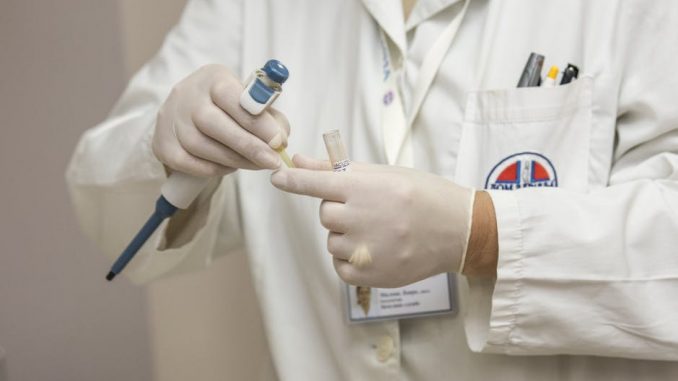
Soon, algorithms will be able to detect skin cancer, dermatologists can reach their patients through the internet and 3D printers will be able to produce artificial skin to make up for tissue shortages. We have already seen many technologies such as dermal fillers and fotona laser skin tightening providing many benefits to cosmetic dermatology. There are many exciting developments in the dermatology world, and healthcare professionals need to be ready to take on the technological innovations making their way to them. Let us begin by going through the many amazing technologies changing dermatology!
1) Telemedicine
Since it is simple to detect when you’ve got a skin issue, and tablets and smartphones coupled with super-fast online connection make it simple to send footage or pictures everywhere, telehealth solutions seemed a natural development in dermatology. The choices of teledermatology providers are soaring. FirstDerm, Spruce, Direct Dermatology, SkinMDnow, Zwivel or iDoc24. All of them work based on precisely the exact same principle: they guarantee patients to link them into a dermatologist on the internet for appointment in a really brief time period. Typically, individuals may load their photos up to a specific stage, and dermatologists give guidance according to it.
2) Big Data
The evaluation of Electronic Health Records (EHRs) and other enormous data-sets allows for the optimisation of such large, information-rich systems as health care. Data analytics help enhance the quality and coordination of maintenance, decrease the incurred costs and prevent unnecessary use of tools. Dermatologists also realised the massive potential of data that was big to deliver lasting change for their specialisation. Data can help inform decisions and identify trends which all improve the quality of health services delivered.
3) Robotics
Amazing high-tech machines emerged on the phase of medicine recently. In all medical areas such as surgery, dermatology and medical imaging have been revolutionised by technology improving healthcare equipment and processes. The New Jersey-based firm, Canfield Scientific have set up the first commercial Vectra WB360 whole-body skin lesion mapping program. It can bring a 360-degree scan of the full body and explains all of the lesions on the skin. However, what is more intriguing, the possibility for robots assisting dermatologists, particularly cosmetic dermatologists later on.
Many skin care kinds and other skin problems are treated with laser treatment treatments, and a research found that robots may have the ability to help there. Researchers compared the precision and consistency of laser irradiation therapies completed by people and robotic arms, and researchers found the robot-guided remedies to be exceptional to the guided treatments. Later on, we can anticipate laser treatments to be completed by “robotic surgeons” with people controlling the procedure.
4) Artificial Intelligence
Deep learning calculations are particularly great at recognising certain pictures, so they have a place in the future of health specialities managing medical imaging, such as radiology or dermatology. By way of instance, IBM chose to allow dermatologists leverage about the outcomes of its profound learning stage as to diagnose melanoma and other forms of skin cancer quicker, more precise and preferably with no necessity for several biopsies.
5) 3D Printing
3D printing could be the answer to all types of tissue shortages from the skin to other organs and body parts. Many innovators and researchers are looking into the huge potential of 3D printing.
Researchers at the Universidad Carlos III de Madrid in cooperation with all the bioengineering company BioDan Group have introduced a prototype for a 3D bioprinter that may make an entirely usable human skin.

6) Regeneration
Injuries to skin require a very long time to cure. To get a 10-millimeter cut, it requires 1-2 weeks to become a scar and gradually fade away. Researchers are focusing on several different inventions for shortening the healing process and hastening the natural reactions of the human anatomy to get better skin regeneration.
7) Social networking
Facebook, Twitter, and LinkedIn will be the social networking platforms that everybody with an online connection understands and uses. They’re wonderful communication instruments, resources of advice and common understanding, they serve as community building spaces and platforms for encouraging good causes. It’s no different regarding health — or dermatology, for this matter. The internet and social media facilitate such swift information transfer, we have seen many workplaces and hospitals use social media to engage staff and deliver training such as slips trips and falls training straight to their devices.
8) Health detectors
Since the marketplace for wearables and wellness detectors is exploding, it is possible to discover all sorts of small gadgets measuring your vital signs and health parameters. Later on, a number of those devices won’t just do basic health monitoring but provide identification or take part in the treatment of particular diseases. Skin-related conditions could be the very first to diagnose or treated by small wearables. L’Oréal launched a wearable device for measuring sunlight and notifying the user when they’re at risk of sunburn.
9) Nanotechnology and nano-particles
Nanotechnology is a growing field especially making an appearance in cosmetics through UV protecting sunscreens and anti-ageing products. When properly engineered, nano-materials could possibly contribute to cosmetic dermatology through delivering retinoids, antioxidants, and other medication to improve the look of skin.
Even though the above-mentioned list has its own limitations, it reveals the huge potential of electronic technologies to modify the landscape of dermatology soon.
